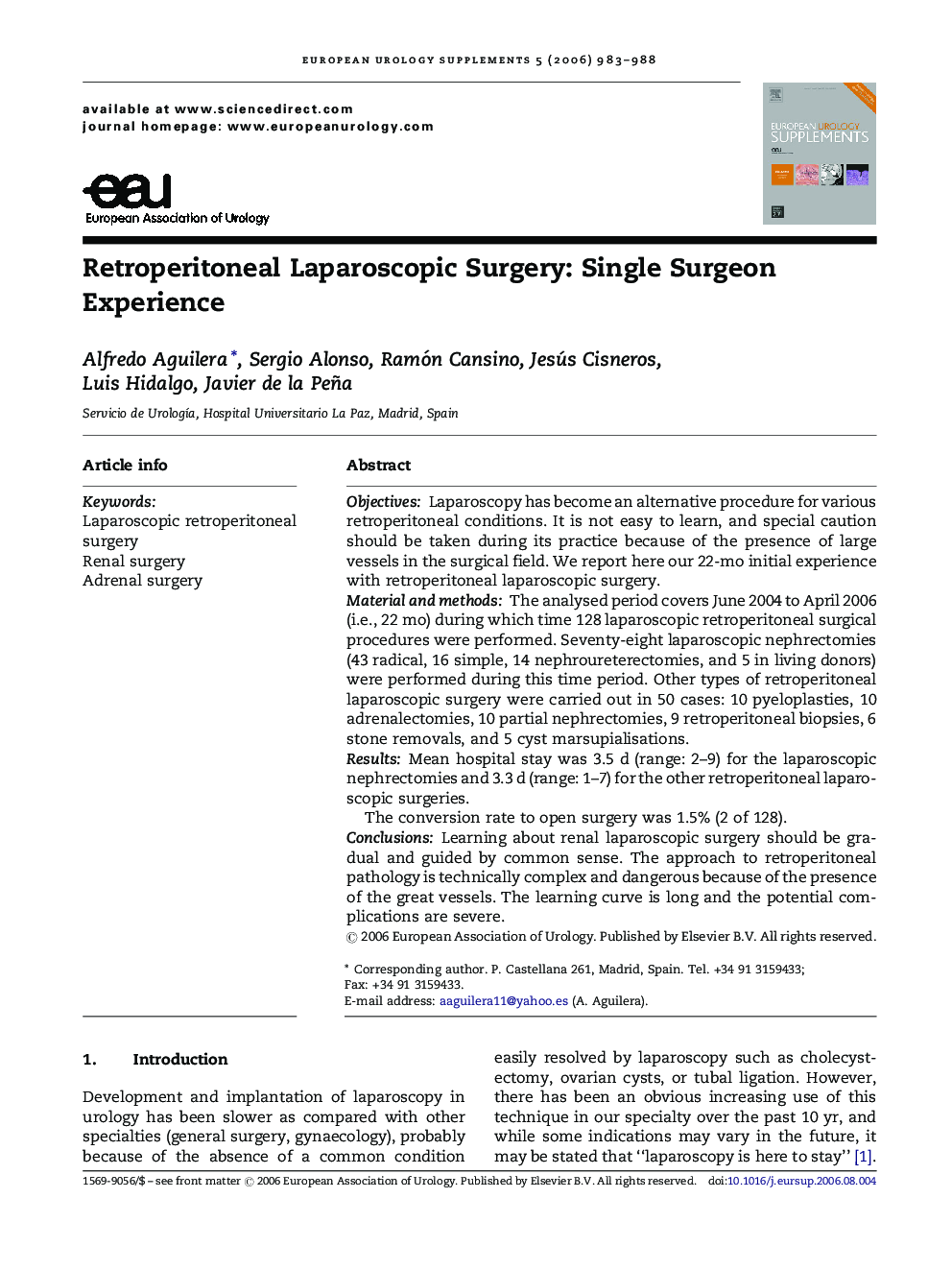| Article ID | Journal | Published Year | Pages | File Type |
|---|---|---|---|---|
| 3935297 | European Urology Supplements | 2006 | 6 Pages |
ObjectivesLaparoscopy has become an alternative procedure for various retroperitoneal conditions. It is not easy to learn, and special caution should be taken during its practice because of the presence of large vessels in the surgical field. We report here our 22-mo initial experience with retroperitoneal laparoscopic surgery.Material and methodsThe analysed period covers June 2004 to April 2006 (i.e., 22 mo) during which time 128 laparoscopic retroperitoneal surgical procedures were performed. Seventy-eight laparoscopic nephrectomies (43 radical, 16 simple, 14 nephroureterectomies, and 5 in living donors) were performed during this time period. Other types of retroperitoneal laparoscopic surgery were carried out in 50 cases: 10 pyeloplasties, 10 adrenalectomies, 10 partial nephrectomies, 9 retroperitoneal biopsies, 6 stone removals, and 5 cyst marsupialisations.ResultsMean hospital stay was 3.5 d (range: 2–9) for the laparoscopic nephrectomies and 3.3 d (range: 1–7) for the other retroperitoneal laparoscopic surgeries.The conversion rate to open surgery was 1.5% (2 of 128).ConclusionsLearning about renal laparoscopic surgery should be gradual and guided by common sense. The approach to retroperitoneal pathology is technically complex and dangerous because of the presence of the great vessels. The learning curve is long and the potential complications are severe.
